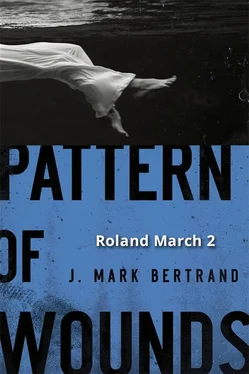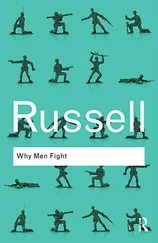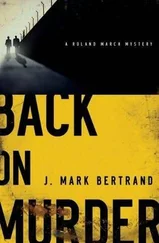J. Bertrand - Pattern of Wounds
Здесь есть возможность читать онлайн «J. Bertrand - Pattern of Wounds» весь текст электронной книги совершенно бесплатно (целиком полную версию без сокращений). В некоторых случаях можно слушать аудио, скачать через торрент в формате fb2 и присутствует краткое содержание. Год выпуска: 0101, Издательство: Baker Publishing Group, Жанр: Полицейский детектив, на английском языке. Описание произведения, (предисловие) а так же отзывы посетителей доступны на портале библиотеки ЛибКат.
- Название:Pattern of Wounds
- Автор:
- Издательство:Baker Publishing Group
- Жанр:
- Год:0101
- ISBN:нет данных
- Рейтинг книги:3 / 5. Голосов: 1
-
Избранное:Добавить в избранное
- Отзывы:
-
Ваша оценка:
- 60
- 1
- 2
- 3
- 4
- 5
Pattern of Wounds: краткое содержание, описание и аннотация
Предлагаем к чтению аннотацию, описание, краткое содержание или предисловие (зависит от того, что написал сам автор книги «Pattern of Wounds»). Если вы не нашли необходимую информацию о книге — напишите в комментариях, мы постараемся отыскать её.
Pattern of Wounds — читать онлайн бесплатно полную книгу (весь текст) целиком
Ниже представлен текст книги, разбитый по страницам. Система сохранения места последней прочитанной страницы, позволяет с удобством читать онлайн бесплатно книгу «Pattern of Wounds», без необходимости каждый раз заново искать на чём Вы остановились. Поставьте закладку, и сможете в любой момент перейти на страницу, на которой закончили чтение.
Интервал:
Закладка:
His outburst is greeted by cold silence. Bascombe keeps flexing his hands, like he’s trying to prevent a fist from forming, while on the other side of me Wilcox fiddles nervously with his ballpoint pen.
“With respect-” the DA begins.
“Just hear my detective out, that’s all I’m asking for. Let him talk, and if you still wanna go down with the sinkin’ ship, it’s your call.”
As much as I dislike the man, I have to admit I’m a little jealous of the way Lauterbach’s chief is backing his play. I can’t imagine Hedges or Bascombe doing the same for me, not in a roomful of prosecutors with the DA himself holding court. By the door, Bodeen raises his eyebrows at me, keeping up his smartest-man-in-the-vicinity act, but even he seems a little surprised at how committed the Sheriff’s Department supervisor comes off. In the lead up to this round-table, he’d led me to expect a dressing down for Lauterbach and company, not a fair hearing on equal footing.
“I really have to object to this,” Bascombe says.
The DA silences him with a raised finger. “Hold on a sec. With all that preamble, I think we might as well hear what the man has to say. I mean, I’ve already read what the detective shared with the Chronicle , but if there’s anything else he’d like to add. .”
Lauterbach bristles at the criticism, even though he had to know it was coming. Past convictions are like precedents in law. In theory you can always go against them, they can always be overturned, but in practice they benefit from extreme deference. Even stronger than the presumption of innocence is the presumption that, if a jury sided with the prosecution, the verdict was sound. By suggesting otherwise, Lauterbach threatens not just me and my reputation but HPD and the Harris County District Attorney’s Office, too. It feels nice for once to be sitting on this side of the table.
“Mr. District Attorney,” he says with icy formality. “You’re mistaken if you think I’ve shared anything with the media. I don’t know where they got their information, but it didn’t come from me. If it had, they’d be having a field day with this story. You’ll see why in just a minute.”
He opens a black laptop on the table and starts untangling wires, hitching the computer via a VGA cable to the projector on the table.
“There’s a PowerPoint?” I ask, rolling my eyes.
Wilcox crosses his arms and sinks back, the ballpoint clicking in my ear.
Nobody lifts a finger to help Lauterbach. Eventually his boss goes to the light switches, fumbling through the row until the projection screen whirs down from the suspended ceiling. After a moment, Lauterbach’s computer display appears on-screen. The cursor glides over a series of desktop icons, double-clicking on the presentation file. But not before I notice the title on one of his folders: TEMPLETON.
Bascombe scratches a note out and slides it in front of me: You need to have a talk with your writer friend. I nod in agreement, trying to work the timing out in my head. At the beginning of the week, Lauterbach seemed never to have heard of The Kingwood Killing , and now there’s a file on his desktop with Templeton’s name on it? Either the man works fast, or he knew more than he was letting on.
Don’t be surprised if this one comes back to bite you.
The screen displays a map of Texas zoomed in so that San Antonio and Houston form the base of a triangle with Dallas at the apex. Interstate 10 runs along the bottom with I-35 and I-45 forming the triangle’s sides. The map is labeled 2009.
“During the course of an ongoing investigation,” Lauterbach says, “I noticed similarities to an unsolved case I worked back in 2005. Digging deeper, I became aware of a number of open homicides with strong similarities. While the details changed from case to case, some things remained constant: female victims discovered in or around water, usually in their own homes, stabbed to death and frequently mutilated afterwards. Including the case Detective March here is working on, there are three this year.”
He touches a button on the laptop’s keyboard and three red circles appear on the map, two in the greater Houston area and one in Dallas.
“The further I went back and the wider I spread my net, the more I found. One in 2008, two more in ’07. .” More dots appear as the years change, each series coded with a different color. “None in ’06, but then there are three again in ’05. This goes all the way back to ’99, and there’s a total here of twenty-one homicides. And this is not counting deaths with similar circumstances where a suspect was charged and convicted. There are four more if you include those. .” The additional dots appear, including one in the Kingwood area color-coded for 1999. “What that means is, we could be talking about as many as twenty-five homicides, and as you can see, there’s a pattern at work.”
The colored dots are clustered around the three cities: fourteen in the Houston area, eight around San Antonio, and three in Dallas.
“As I’m sure everyone in this room knows, Donald Fauk sold his house here and moved to Florida after his wife’s death. That was in 2000. From then until he was extradited in September of 2001, there were two homicides here that fit the pattern, and of course most of these took place once he was behind bars.”
The map dissolves, replaced by a lineup of photos, twenty-four victims arranged in rows of eight, the only one absent being Simone Walker. Dates and case numbers are affixed to most.
“After reviewing Detective March’s case file, I came to the conclusion that Simone Walker fits the profile, too.”
He taps the keyboard and the photo of Simone at the party materializes, the one I first saw on her shelf when Dr. Hill took me to her room. Seeing it again, a strange sensation comes over me, a mix of disappointment and shame. As if she’s looking down on me, her smile faked, trying to hide her sense that I’ve failed her.
Bascombe passes me another note: How are we not on top of this?
“When you say there are similarities,” the DA asks, “what exactly do you mean? Are these killings all the work of one individual, or do they just happen to have a few things in common? I mean, there’s a lot of women in Texas and a lot of knives and a lot of swimming pools. That doesn’t mean every time you find those three things together that it’s Colonel Mustard with the knife in the swimming pool, if you see what I mean.”
The ADAs crack a collective smile, letting their boss know they get the joke. Lauterbach takes it in stride.
“Some of these cases I’ve reviewed in more detail than others,” he says, “so I’m not standing here telling you each and every one belongs to the series. But if you look at those numbers, the reality of the situation has to sink in.”
“The reality?”
“Whelp, we’ve got a serial killer at work here. He’s active in our backyard and in several other jurisdictions on top of that. Based on the way the numbers are weighted, I think he lives here in Houston and travels often to San Antonio and occasionally to Dallas. When he’s on the road, he has enough time to identify victims and plan the murders. The question is, are we gonna put all our effort into defending past convictions, letting this guy continue to operate with impunity, or are we gonna wake up and start going after him?”
A pause during which all eyes move to the DA’s side of the table. “This is legit? We’re not talking smoke and mirrors here?”
Lauterbach advances the screen again, revealing the mug shot of a hollow-cheeked Hispanic male. “This is Raúl Guzman. In 1999, Detective Fitzpatrick identified him as a suspect in Nicole Fauk’s murder. Guzman was seen leaving a convenience store shortly after she did, and he had a sexual assault charge in his jacket. When his DNA was checked against samples from the scene, they came back negative.
Читать дальшеИнтервал:
Закладка:
Похожие книги на «Pattern of Wounds»
Представляем Вашему вниманию похожие книги на «Pattern of Wounds» списком для выбора. Мы отобрали схожую по названию и смыслу литературу в надежде предоставить читателям больше вариантов отыскать новые, интересные, ещё непрочитанные произведения.
Обсуждение, отзывы о книге «Pattern of Wounds» и просто собственные мнения читателей. Оставьте ваши комментарии, напишите, что Вы думаете о произведении, его смысле или главных героях. Укажите что конкретно понравилось, а что нет, и почему Вы так считаете.












